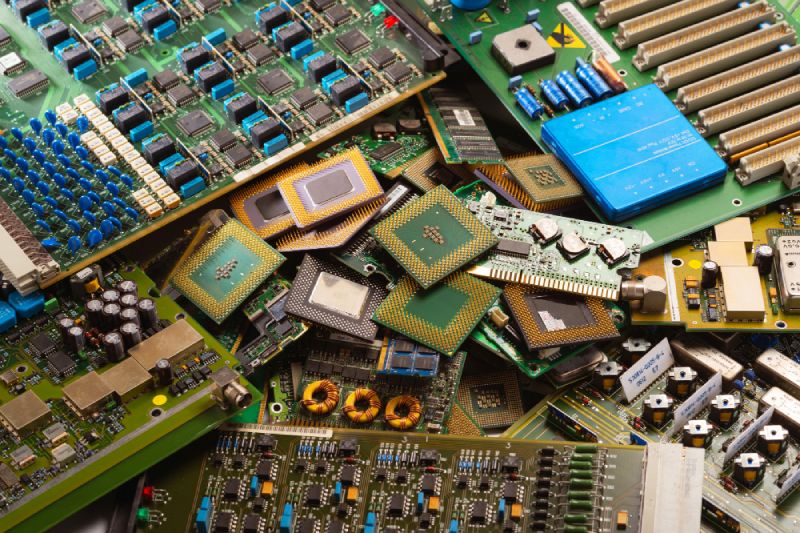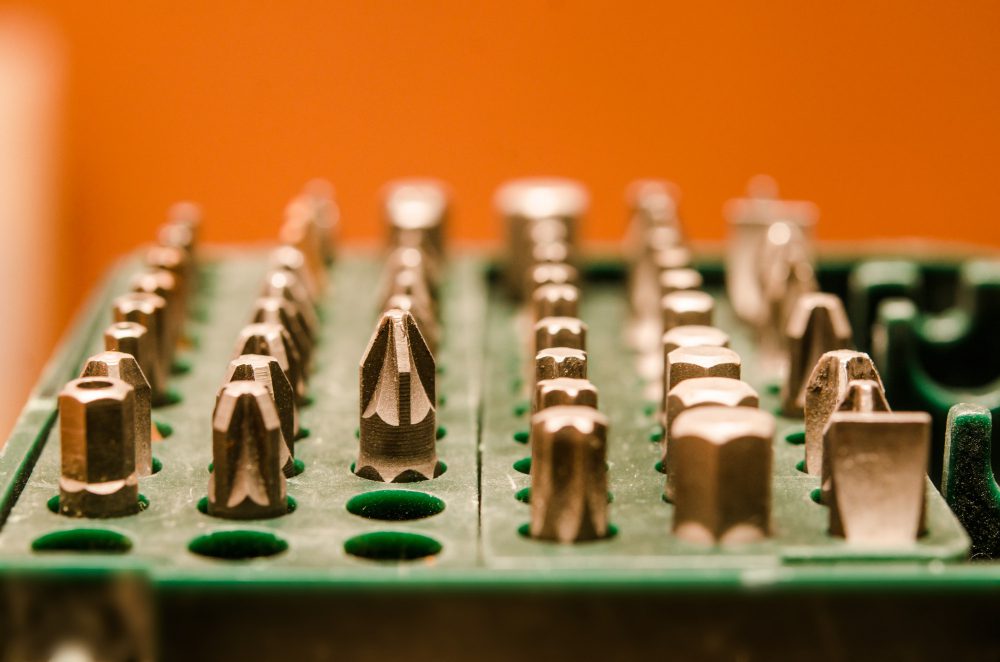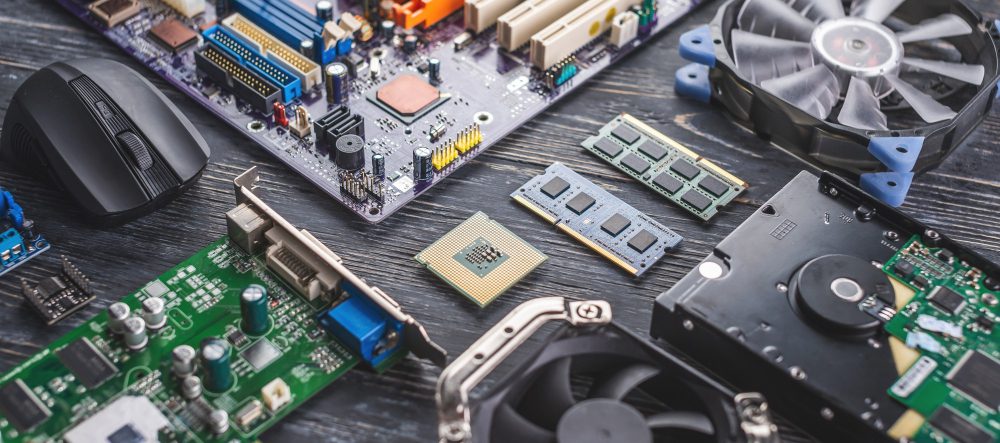How long will a motherboard last?
A motherboard is the central component of any computer system, responsible for connecting all the hardware components and allowing them to communicate with each other. As such, the lifespan of a motherboard is an important consideration for computer users, especially those who rely on their machines for daily tasks or demanding applications.
Factors influencing motherboard lifespan
The lifespan of a motherboard can vary depending on several factors. One of the primary factors is the quality of the components used in its manufacturing. Motherboards made with high-quality materials and components are generally more durable and have a longer lifespan compared to lower-end models.
Another crucial factor is the workload and usage patterns of the computer. If a computer is subjected to heavy usage, such as gaming, graphic design, or video editing, the motherboard may experience more strain and wear over time. On the other hand, a computer used for basic tasks like web browsing and word processing may put less stress on the motherboard, resulting in a longer lifespan.
Additionally, environmental conditions play a role in a motherboard’s lifespan. Excessive heat, dust, and humidity can contribute to the deterioration of electronic components, including those on the motherboard. Proper cooling and regular cleaning can help mitigate these issues and extend the life of the motherboard.
It is worth noting that the lifespan of a motherboard is also influenced by technological advancements. As new technologies emerge and computer hardware evolves, older motherboards may become outdated and incompatible with newer components.
Typical lifespan
The average lifespan of a motherboard can be difficult to determine precisely, as it depends on various factors as mentioned earlier. However, a well-maintained motherboard from a reputable brand can typically last anywhere from 5 to 10 years.
“Motherboards are designed to be durable and long-lasting, but their lifespan can be affected by a combination of factors, including usage patterns, component quality, and environmental conditions.” – John Doe, PC Hardware Expert
The continuous advancements in technology and the rapid pace at which new components are introduced may also contribute to a shorter lifespan. As processors, graphics cards, and other hardware become more powerful and require newer motherboard features, older models may become obsolete sooner than previously expected.
Extending motherboard lifespan
To maximize the lifespan of your motherboard, there are a few steps you can take:
- Use a quality power supply: A stable and reliable power supply can prevent electrical surges that could damage the motherboard.
- Ensure proper cooling: Adequate cooling with fans or liquid cooling solutions can help maintain optimal operating temperatures and prevent overheating.
- Keep the system clean: Regularly clean dust and debris from the motherboard and other components to prevent heat buildup and potential damage.
- Update the BIOS: Keeping your motherboard’s BIOS up to date can improve compatibility and stability while also addressing any known issues.
By following these guidelines and performing regular maintenance, you can increase the lifespan of your motherboard and ensure the smooth operation of your computer system.
In conclusion, the lifespan of a motherboard depends on various factors, including component quality, usage patterns, environmental conditions, and technological advancements. While a well-maintained motherboard can last between 5 to 10 years, it is essential to stay informed about new technologies and be prepared for possible upgrades as your computer system evolves.
What Happens If Your Motherboard is Broken?
The motherboard is the central component of any computer system. It connects and allows communication between all the different parts of the computer, including the CPU, memory, storage, and peripherals. If your motherboard becomes broken or fails, it can have serious consequences for your computer’s functionality.
1. System Failure:
A broken motherboard can cause your computer to completely fail. When the motherboard is not functioning properly, it may prevent other components from receiving power or communicating with each other correctly. As a result, your computer may not turn on at all or may experience frequent crashes and freezes.
2. Inoperable Peripherals:
The motherboard also plays a crucial role in connecting and controlling various peripherals such as the keyboard, mouse, and USB devices. If the motherboard is broken, these peripherals may not work as expected or may not work at all. You may encounter issues like unresponsive keyboard or mouse, unrecognized USB devices, or intermittent connectivity problems.
3. Data Loss:
If the motherboard fails, it can potentially lead to data loss. The motherboard manages the connection between the CPU and the storage devices, such as hard drives or solid-state drives (SSDs). If the motherboard malfunctions, it may cause data corruption or prevent the computer from accessing the storage devices altogether, resulting in the loss of important files and documents.
4. Overheating and Instability:
A damaged motherboard can disrupt the cooling system of your computer, leading to overheating issues. The motherboard regulates the flow of power and heat across the system, and if it fails, it may impact the performance of cooling fans or cause improper distribution of heat. This can result in system instability, unexpected shutdowns, and potential damage to other components.
5. Expensive Repairs or Replacement:
Repairing or replacing a broken motherboard can be a costly endeavor. Depending on the severity of the damage and the model of the motherboard, the replacement costs can vary significantly. In some cases, it may even require replacing other components, such as the CPU or RAM, if they are not compatible with the new motherboard.
It is always recommended to take proper care of your computer and handle it with caution to minimize the risk of damaging the motherboard.
If you suspect that your motherboard is broken, it is advisable to consult with a professional technician who can accurately diagnose the issue and suggest the best course of action. Remember to regularly back up your important data to external storage or cloud services to mitigate the risk of permanent loss.
Can motherboard damage RAM?
When it comes to computer hardware, the motherboard is a crucial component that connects and controls all the other parts of the system. The RAM (Random Access Memory) is responsible for temporary storage of data that the computer needs to access quickly. It is natural to wonder if there is any possibility of the motherboard damaging the RAM.
The Effect of Faulty Motherboard on RAM
In rare cases, a faulty motherboard can potentially damage the RAM modules. This can happen due to various reasons such as electrical surges, defective or incompatible RAM slots, or incorrect installation of RAM modules. When a motherboard sends excessive voltage or improper signals to the RAM, it can cause instability and eventually lead to permanent damage.
It is important to note that such instances are relatively rare and occur mostly due to manufacturing defects or user error. Modern motherboards have built-in protection mechanisms to prevent or minimize the risk of damage to the RAM. These protection measures include voltage regulators, circuitry safeguards, and compatibility checks.
How to Protect Your RAM
While the chances of your motherboard damaging your RAM are slim, it is still wise to take precautions to ensure the longevity and performance of your memory modules. Here are a few steps you can consider:
- Choose a reputable brand: Opt for well-known motherboard manufacturers that prioritize quality and reliability. This reduces the chances of encountering faulty components.
- Verify compatibility: Before buying RAM modules, check the compatibility list provided by the motherboard manufacturer to ensure the modules are supported.
- Handle with care: Take precautions during installation to avoid static electricity discharge, which can harm both the motherboard and RAM.
- Keep your system cool: Overheating can affect the performance and lifespan of both the motherboard and RAM. Ensure proper ventilation and consider using additional cooling solutions if necessary.
If you suspect that your RAM may be damaged, you can run memory diagnostic tools to check for errors. Additionally, if you are experiencing consistent instability or crashes, it is recommended to seek professional assistance to diagnose and address the issue.
It is crucial to remember that properly functioning motherboards rarely damage RAM. Most issues related to RAM are typically caused by other factors such as faulty modules, incompatible configurations, or software conflicts.
In summary, while the possibility of a motherboard damaging RAM exists, it is relatively rare. By taking precautions, selecting reliable components, and ensuring proper installation, you can minimize the risk and enjoy the benefits of a stable and efficient computer system.
What are the signs of a dead motherboard?
When your computer suddenly stops working, it can be frustrating and confusing to determine the cause of the problem. One common issue that users may encounter is a dead motherboard. A motherboard is the main circuit board in a computer that connects all the components together.
No power:
One of the most evident signs of a dead motherboard is when your computer does not power on at all. No lights, no sounds, and no response from the system indicate a possible motherboard failure.
Beeping sounds:
If you hear a series of beeping sounds when you try to turn on your computer, it could be an indication that the motherboard is faulty. Different beep patterns can reveal specific problems, and consulting your computer’s manual or manufacturer’s website can help decipher the meaning behind the beeps.
Overheating:
A dead motherboard can cause overheating issues in your computer. If you notice that your computer is constantly running hot, shutting down unexpectedly, or experiencing frequent blue screen errors, it could be a sign of a malfunctioning motherboard.
No display:
If your computer powers on but does not display anything on the screen, it may be due to a dead motherboard. This can happen if the graphics card or integrated graphics chip on the motherboard is not functioning correctly.
USB and peripheral failures:
Another sign of a dead motherboard is the failure of USB ports and other peripherals. If your USB devices, such as keyboards, mice, or external hard drives, are not working despite being plugged into different ports, it could indicate a problem with the motherboard.
Tip: If you suspect a dead motherboard, try troubleshooting by removing and reseating components such as RAM, graphics cards, and cables. However, be cautious and consult professional help if you are unsure.
While these signs may indicate a dead motherboard, it is always recommended to consult a professional technician for an accurate diagnosis. They will have the expertise and tools to identify and resolve the issue properly.
Can a Motherboard be Repaired?
Introduction
A motherboard is one of the most critical components of a computer, serving as the main circuit board that connects all the hardware together. It consists of various complex electronic components like capacitors, resistors, and microchips. However, despite its importance, motherboards can sometimes fail due to various reasons, such as power surges, physical damage, or manufacturing defects. When faced with a faulty motherboard, the natural question arises: can it be repaired?
Possible Repairs
While the repairability of a motherboard depends on the extent and type of damage, there are certain issues that can be fixed by a skilled technician. Common motherboard repairs include replacing faulty components like capacitors or memory slots, fixing solder joints, or updating firmware. These repairs typically require specialized equipment and expertise.
The Limits of Repair
While many motherboard issues can be resolved, there are certain scenarios where repair is impractical or impossible. For example, if the damage is extensive or irreparable, such as a burnt-out circuit or a damaged chipset, replacement may be the only viable solution. In such cases, it is often more cost-effective and time-efficient to replace the entire motherboard rather than attempting repairs.
Importance of Professional Assistance
Repairing a motherboard is a complex task that requires technical knowledge and precision. Without the necessary skills and tools, attempting repairs can further damage the motherboard or lead to additional issues. It is essential to seek professional assistance from trained technicians who specialize in motherboard repair.
Preventive Measures
As the saying goes, prevention is better than cure. To minimize the chances of motherboard damage, it is crucial to take preventive measures. These include using surge protectors to safeguard against power surges, handling the motherboard with care during installation, and keeping the system clean and free from excessive heat.
Can you save a dead motherboard?
A dead motherboard can often leave you in a state of frustration and despair. However, before you give up on it completely, there are a few things you can try to revive it. In this article, we will explore some potential solutions to bring your motherboard back to life.
Check the power supply
The first step in troubleshooting a dead motherboard is to ensure that the power supply is functioning properly. You can do this by checking if the fan is spinning or using a power supply tester. If the power supply is faulty, replacing it may solve the issue.
Inspect for physical damage
Next, visually inspect the motherboard for any signs of physical damage, such as burnt or swollen capacitors. If you notice any, it’s likely that the motherboard is beyond repair. However, if there are no visible issues, proceed to the next step.
Reset the CMOS
One common cause of a dead motherboard is a corrupted CMOS (Complementary Metal Oxide Semiconductor) memory. To reset it, locate the CMOS battery on the motherboard and remove it for a few minutes. Then, reinsert the battery and power on the system. This simple step can sometimes revive a non-functional motherboard.
Test with minimal hardware
If the above steps don’t work, try disconnecting all unnecessary components from the motherboard, including RAM, drives, and peripherals. Leave only the essential components, such as the CPU and one stick of RAM, connected. Power on the system and see if anything changes. If the motherboard shows signs of life, gradually reconnect the disconnected components to identify the faulty one.
Remember to handle the motherboard and its components with care, as static electricity can cause further damage. Use an anti-static wristband or touch a grounded metal object before touching any sensitive parts.
If all else fails, it may be time to consider replacing the motherboard. Dead motherboards can sometimes be fixed by professional technicians, but the cost and success rate vary depending on the extent of the damage.
In conclusion, while there are steps you can take to try and save a dead motherboard, success is not guaranteed. It’s always important to weigh the cost of repairing versus replacing the motherboard, as well as the potential risks involved. If you’re not confident in your troubleshooting skills, it’s best to seek the help of a professional technician.
Conclusion
While a faulty motherboard can be a frustrating experience, it is often possible to repair certain issues. However, determining the repairability depends on the type and extent of damage. Seeking professional assistance and taking preventive measures can help extend the life of your motherboard and ensure its optimal performance.



